Climbing hooks
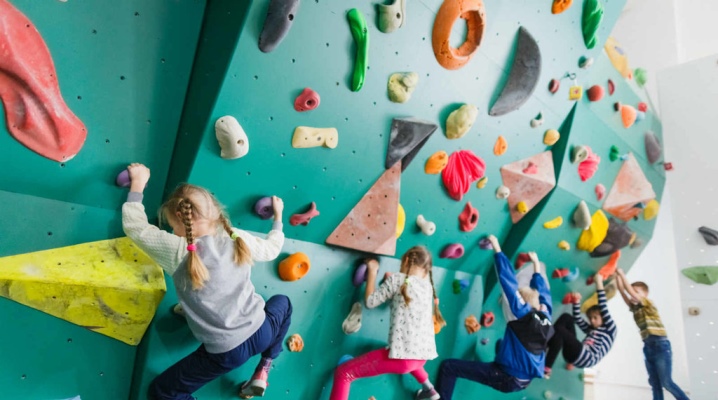
Climbing is an active activity, therefore, parents, concerned about the physical condition of the child, try to enroll their children in this particular section. Moreover, not only all muscle groups are involved in this sport, but also logical thinking develops.
For this reason, climbing walls are in great demand; they are made at home if necessary. In such cases, it is necessary to take into account the opinion of experts who argue that not only the shape of the structure, but also the hooks, is important in climbing walls.
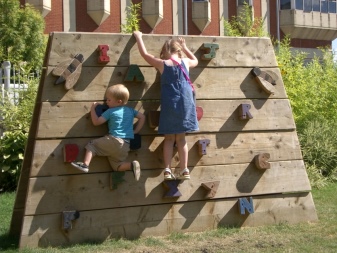
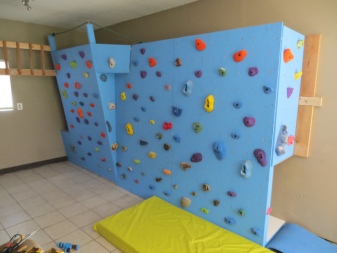
Characteristic
Climbing hooks are climbing devices that attach to a wall to form a variety of ledges. These ledges are of great importance for the climber, because they train not only physical strength, but also logical thinking. In specialized centers, it is no coincidence that all routes have different age differentiation.
They differ in both the height of the structures and the characteristics of the hooks, which include the material of manufacture, the size of the variety and its shape.
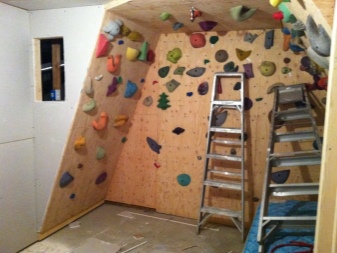
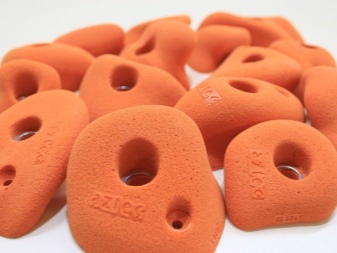
Views
All existing varieties of climbing wall holds can be divided into 2 main groups. These are professional training holds and amateur sports holds.
The varieties differ from each other in shape, which affects the complexity or ease of operation. For people who are engaged in rock climbing at a professional level, hooks are required, which are more difficult to climb due to their shape, which does not allow strong hooks, both with hand and foot. The hobby hook has a comfortable internal notch for good grip on the fingers. They are usually large and comfortable in shape, allowing you to effortlessly push off from them with your feet.
As for the parameters of these elements of the climbing wall, they are large, imitating mountainous terrain, and there are also small sizes, called "scanty".

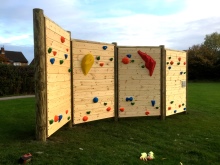
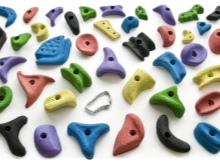
Amateur activities include the following options.
- "Pockets", named by analogy with a pocket. They have a large internal indentation that allows a firm grip with all 5 fingers. There are pockets on the tracks for professionals, where they play a secondary role and are located mainly on the ceiling.
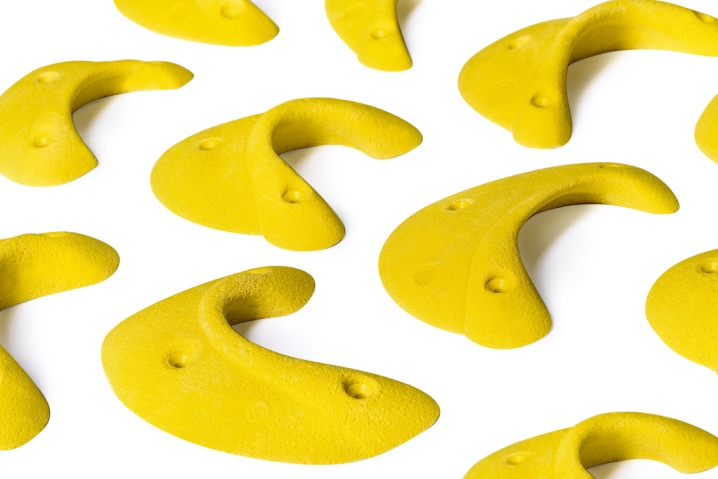
- Tweezers are small hooks that attach vertically. The design is quite narrow, so you can hook on it by grasping on one side with your thumb, and on the other with 4 others. The structure has no internal grip recesses, there is only a slight recess for the thumb.
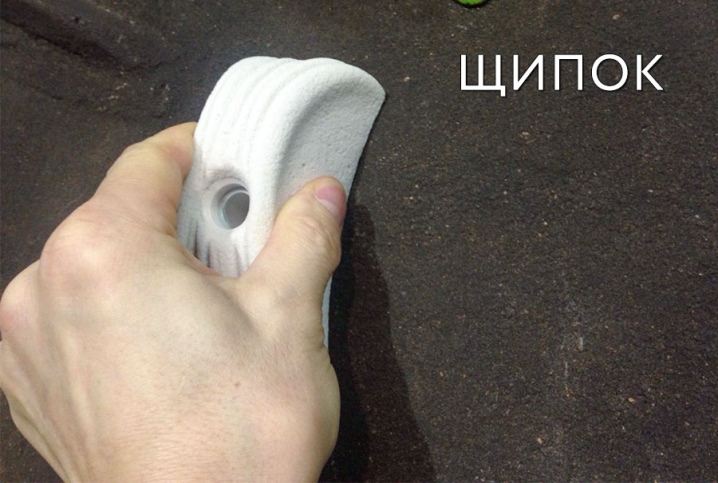
- "Ribs" is a model that contains the features of "pinches" (narrow shape) and "shelves" (The grip is carried out by the thumb on one side and the rest on the other).

- "Holes" are a childish type of holds that has a certain difficulty in gripping. The fact is that the shape of the "hole" resembles drying. Children with strong hands grab the round outside. If it is difficult for someone to carry out such a grip, then you can, putting your thumb in the center of the circle, catch on to its half.
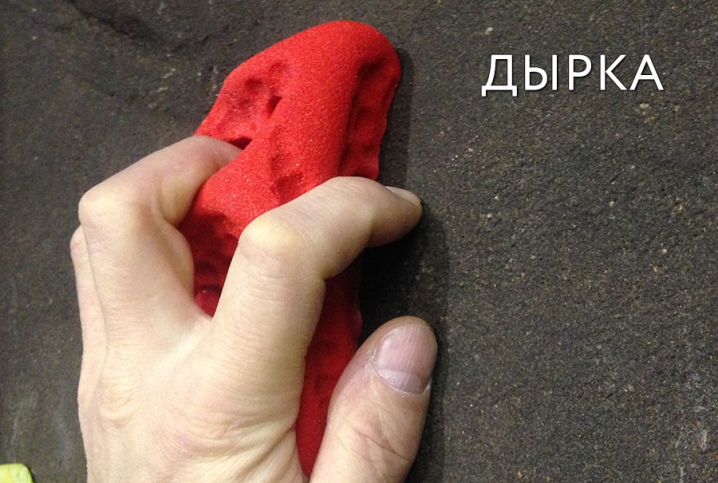
- "Animal" hooks are considered the most childish variety.having the appropriate shape. There are no definite difficulties in capturing "animals". They are used when working with young children who still need to explain which grip is better to grab.
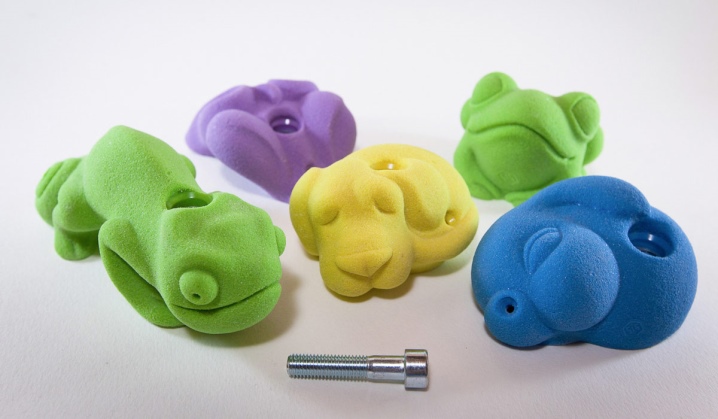
For professional climbing walls.
- "Mini pockets" versus "pockets", have one small notch that allows you to catch on it only with your thumb when the arm or wrist is extended.
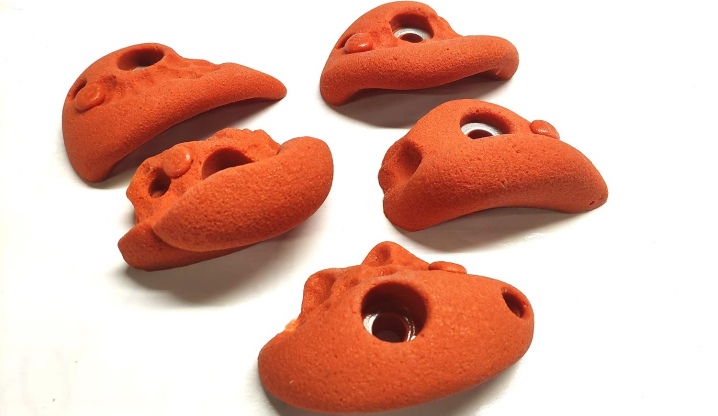
- "Shelves" that are smaller in shape than "mini-pockets", do not have internal grooves, which makes it difficult to reach with a hand. The element got its name due to the 90-degree braces, which are available practically along the entire perimeter of the hook. The difficulty of working with them lies in the fact that you can only grab them with a hand at an angle of 90 degrees.
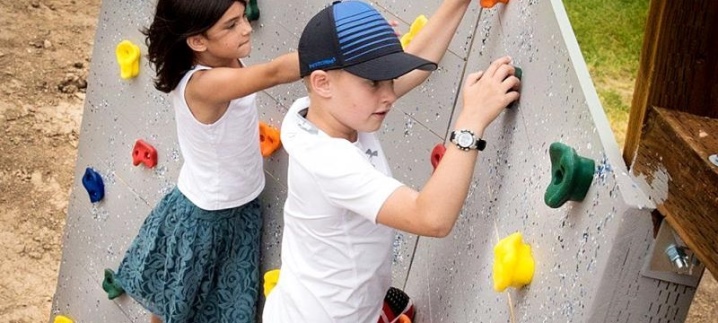
- "Passives" or "Sloper" - this is one of the most difficult types of holds, when gripping which it is necessary to understand which side to focus on.
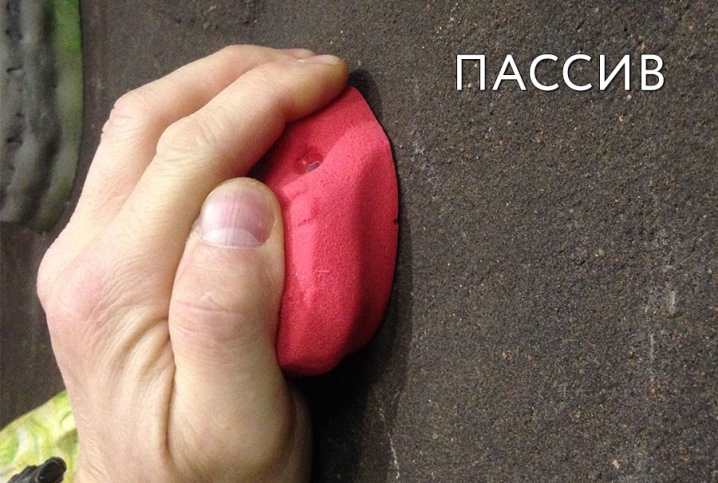
Not only their shape is important for the holds, but also the size, which sometimes does not allow to grab.
This type includes "Mizer", used mainly for leg support. "Miners" are opposed to "Reliefs", which are characterized by impressive size and various shapes, which for a quick rise requires skill and understanding when and what it is better to catch on. It should be noted that the models presented above have different shapes and sizes, such as "Passives" ("Sloper").
Besides, models differ in the material of manufacture. There are plastic and wooden options. Plastic models are analogs of options made of stone, which is a slippery material, which is the difficulty in working with it. Wooden models are the most common in amateur sports.

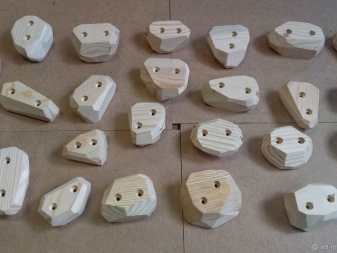
Fastening
Installed holds, for example, in a home climbing wall can quickly get bored. In order to be able to change the route, it is not recommended to mount them directly to the wall. To replace the track, it is not necessary to purchase new options, you just need to swap the existing ones. To have this opportunity, you need to fix the equipment on plywood sheets.
After the route has been planned, we decide how it is more convenient to place the holds. We make holes for fasteners: on the inside, at a distance of 20 cm from each other, we put hardware or, as they are also called, "bulldogs" or "crabs". It is better to mount more hardware immediately. This will allow you not to remove the panel when it becomes necessary to swap the grips.
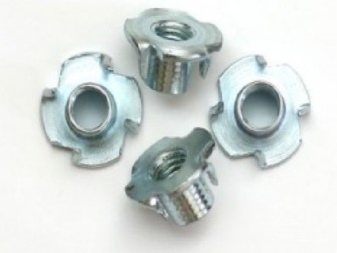
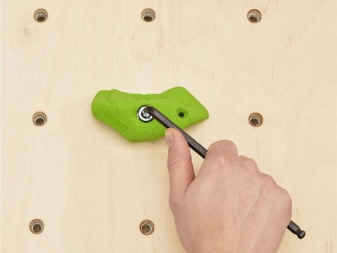
In order to place the "holders" correctly, it is better to use the bolts that fit them for the factory models. Models can also be fixed to the support using screws.
When using models of different shapes, you need to position them so that the handles for which the coverage occurs are away from each other to avoid injury.

Choice
For a climbing wall, you can make your own hooks, or you can buy factory climbing kits. This set consists of 50% handle hooks. The next 50% are divided among themselves by pinches and pockets, among which there is always a part of assets and liabilities in the set.
Most often, foot hooks are not included in the kit, you can make them yourself or buy a factory version. Experts recommend choosing smaller models for these purposes. This complicates the trail and is a safe option for beginners.
Children who are just starting out in rock climbing are advised to purchase models with deep pockets, which it is advisable to use in combination with smaller models on which children develop finger strength. But it is not worth abusing such a variety, as this can cause deformation of not yet properly formed children's hands.
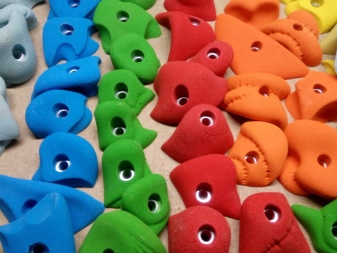
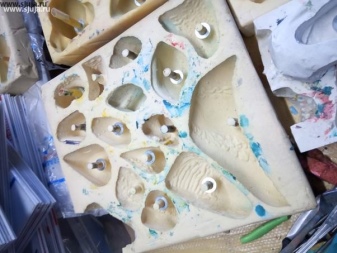
How to do it yourself?
The easiest way to make hooks with your own hands is from wooden blocks. In this case, wood is a material that can be easily given any desired shape. Finished wooden models need to be well sanded and varnished to eliminate the likelihood of splinters.
In addition to wood, you can make holds from stone, which can also be polished and trimmed.The difficulty of working with a stone is that you need the necessary tools and safety glasses to prevent debris from getting into the eyes.
Wooden hooks are attached to screws or bolts, and the stone is attached to a particularly strong glue designed for this purpose.










The comment was sent successfully.